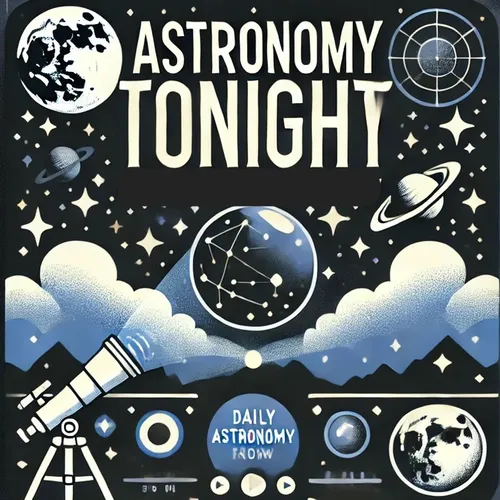Astronomy Tonight for - 12-22-2024
- Author
- Inception Point Ai
- Published
- Sun 22 Dec 2024
- Episode Link
- https://www.spreaker.com/episode/astronomy-tonight-for-12-22-2024--63436729
Ah, December 22nd! A date that twinkles with astronomical significance, particularly because it marks the winter solstice in the Northern Hemisphere (and the summer solstice in the Southern Hemisphere) most years. However, in 2024, the solstice actually occurs on December 21st due to the peculiarities of our calendar system.
But let's zoom our cosmic telescope back to December 22, 1891, when a truly stellar event occurred: the birth of Arthur Eddington, one of the most influential astrophysicists of the 20th century.
Picture this: A chilly winter's day in Kendal, England. Little did anyone know that the baby born that day would grow up to be the man who would provide the first observational evidence for Albert Einstein's theory of general relativity!
Eddington's cosmic claim to fame came on May 29, 1919, during a total solar eclipse. With his trusty telescope and a dash of British pluck, he led an expedition to the island of Príncipe off the west coast of Africa. His mission? To observe the bending of starlight by the Sun's gravitational field, a phenomenon predicted by Einstein's theory.
Despite cloudy skies (because, of course, it wouldn't be a proper British scientific expedition without some inclement weather), Eddington managed to capture photographic plates that showed the positions of stars near the eclipsed Sun. When compared to photos of the same region taken at night months earlier, the results were clear: the starlight had indeed been bent by the Sun's gravity, just as Einstein had predicted.
This observation catapulted Einstein to worldwide fame and cemented Eddington's place in the astronomical hall of fame. It was a watershed moment in science, confirming a theory that fundamentally changed our understanding of space, time, and gravity.
So, on this day, we might imagine a young Arthur Eddington gazing up at the winter sky, perhaps catching a glimpse of a shooting star and dreaming of the cosmic mysteries he would one day help unravel. Little did he know that his birth would mark the beginning of a journey that would bend not just starlight, but the very course of scientific history!
This content was created in partnership and with the help of Artificial Intelligence AI
